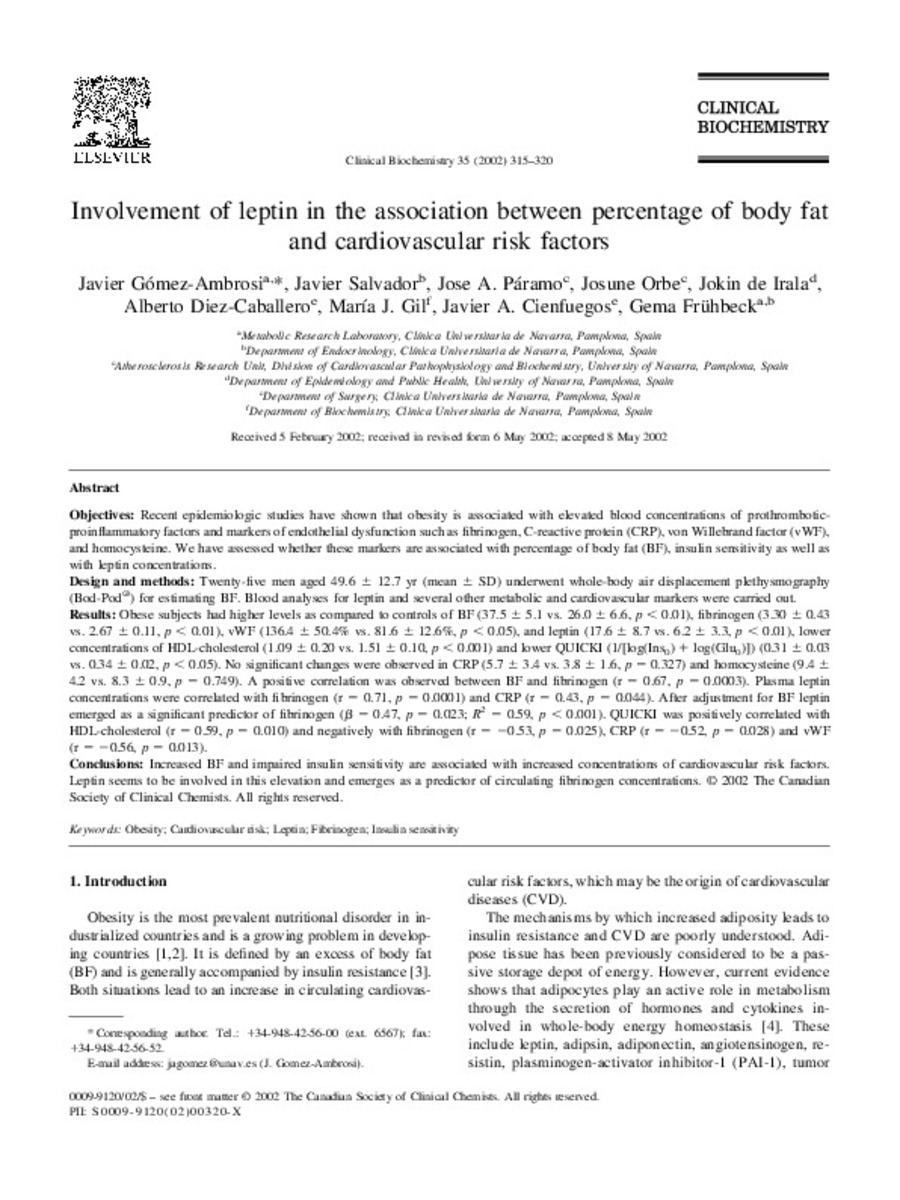Involvement of leptin in the association between percentage of body fat and cardiovascular risk factors
Keywords:
Obesity
Cardiovascular risk
Leptin
Fibrinogen
Insulin sensitivity
Citation:
Gomez-Ambrosi J, Salvador J, Paramo JA, Orbe J, de Irala J, Diez-Caballero A, et al. Involvement of leptin in the association between percentage of body fat and cardiovascular risk factors. Clin Biochem 2002 Jun;35(4):315-320.
Statistics and impact
0 citas en

0 citas en

Items in Dadun are protected by copyright, with all rights reserved, unless otherwise indicated.








